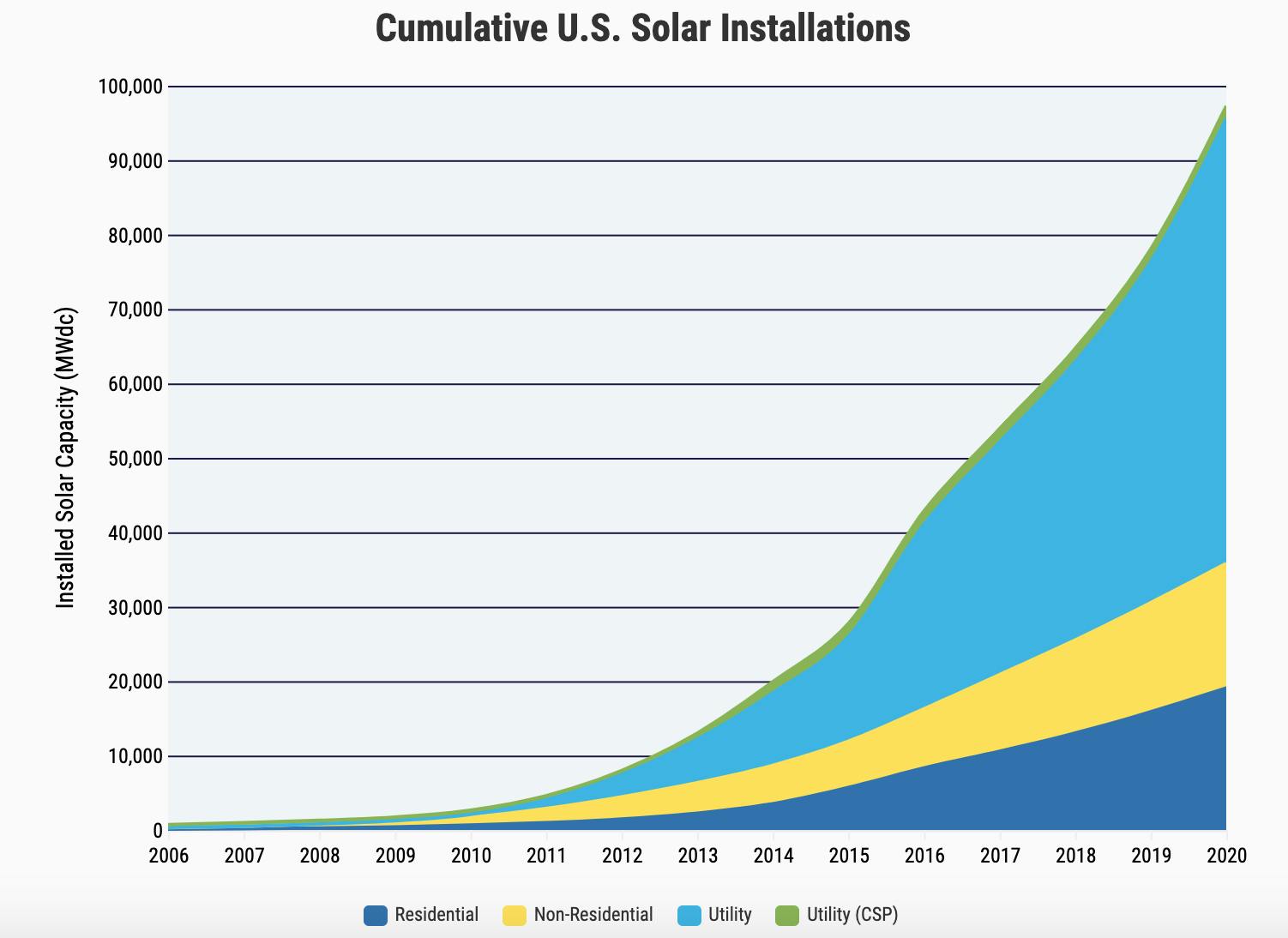TL;DR Science: Solar Panels
By Thomas P.
May 05, 2021 · 1 minute read
Earth Science
Physics
Environmental Science
Engineering
Many different kinds of renewable energy have come to the public eye as our society is ever eager to move away from fossil fuels. One of the most widely used forms of renewable energy that is used in Florida and other sunny climates is solar energy. Solar panels can be used on top houses, buildings, or on the ground to create “solar farms”.
So, how do they work?
In simple terms, they use energy from the sun and convert it to electricity to power houses, buildings, and more. Solar panels are made up of smaller cells (made of silicon) that can produce ½ a volt each. Each cell is made up of electrons that connect to an atom. When light (made up of photons) hits the electrons they move to the positively charged part of the cell. This energy can be used to do work after it is converted to Alternating Current. When electricity flows through a circuit, the electrons return to the solar panel’s negatively charged side.
Advantages/disadvantages
Solar energy has numerous benefits. There are a couple to name according to Solstice.us:
- Solar Energy is clean:
This is pretty obvious, but it needs saying. Solar energy does not produce any emissions, pollution, or carbon footprints. This is because the system is really only a circuit: energy from the sun is harnessed to produce electricity, the electricity powers the building, the electrons return to their place on the solar panel.
Another thing that Solstice.us does not mention is the fact that solar energy is clean gives it a better chance of helping us battle climate change. - Solar Energy is cheap:
While solar panels do present a high initial cost compared to some fossil fuels, similar to other forms of renewable energy, their initial costs are eventually compensated for in the lack of necessary maintenance. One of the costs that fossil fuels have that solar power does not have to do with its negative environmental impact, e.g. oil spills.
Solar energy can also help save costs for homeowners, in regards to their electricity bill. Homeowners that generate extra electricity can generally sell it back to their local utility company.
However, solar energy does have its criticisms, the following being the most common:
- Solar panels do not work at night or when it’s cloudy:
This limitation is definitely the most significant one, as well as the one that has perhaps prevented it’s widespread use. Though solar panels only work in the day, there is a solution to this problem. The use of energy storage solutions such as battery storage, can facilitate the storage of extra electricity that is generated but not used. This stored energy can then be used at night or on cloudy days. However, this does add considerable installation costs.
Current adoption of solar energy
According to the Solar Energy Industries Association, the current adoption of solar panels is below, as you can see the adoption of solar energy is growing very aggressively since the 2010s:

You can watch a TED-Ed video on solar energy here:
TL;DR: Solar energy is harnessed from solar panels and converted to electricity for use. Solar energy is a type of renewable energy.
References:
https://www.livescience.com/41995-how-do-solar-panels-work.html
https://solstice.us/solstice-blog/benefits-solar-energy/
https://www.vivintsolar.com/learning-center/benefits-of-solar-energy-to-the-environment
https://exploringgreentechnology.com/solar-energy/advantages-and-disadvantages-of-solar-energy/
Did you enjoy this article?
About The Author
Thomas is a student at Eastside High School.